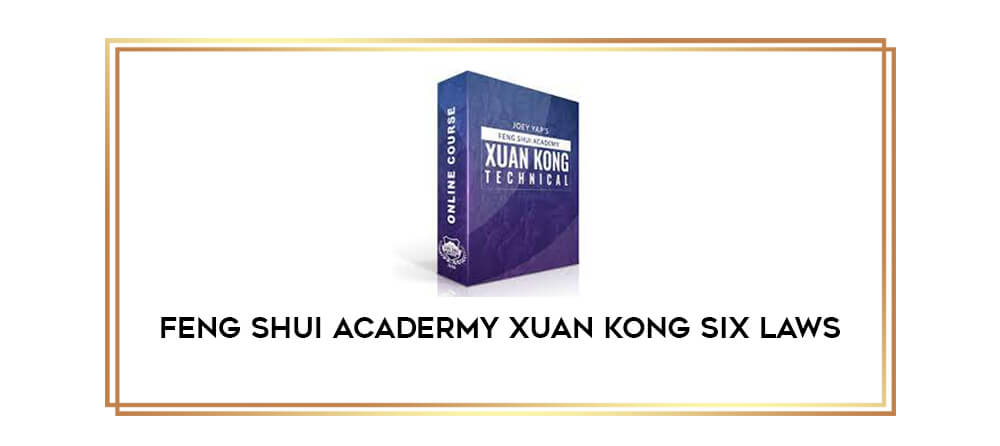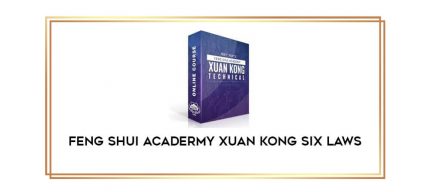FENG Shui Acadermy Xuan Kong Six Laws
Course Description
Salepage : FENG Shui Acadermy Xuan Kong Six Laws
Delivery : Online With Any Device
The 8 Mansions and Flying Stars schools of thought are two of the most well-known branches of Xuan Kong.
Another school of thought with a good reputation is known as Xuan Kong Liu Fa (), also known as the 6 laws or 6 techniques (methodologies).
Its roots are mostly found in the classical writings of,,, and.
The 6 rules of feng shui, however, contain numerous principles that appear to clash with the fundamentals of the two other metaphysical sciences, in contrast to 8 mansions and floating stars, which, for the most part, are able to integrate and complement one another.
This is why it is uncommon for feng shui professionals to base their audits, which are generally based on 8 mansions and/or floating stars, on the six rules. And those who adhere to the six laws are frequently experts who dismiss all other theories in favor of the six.
8 periods divided into 2 eras
The 180-year cycle that the temporal dimension of Xuan Kong Liu Fa (XKLF) uses to schedule itself is repeated at the conclusion of the cycle.
It has a lower era and an upper era, each with four eras. There is no period at position 5.
Time Frame Years Time Frame Era 1 1864–1881
Upper 2 24 1882 – 1905
Upper 3 24 1906 – 1929
Upper 4 24 1930 – 1953
Upper 6 21 1954 – 1974
Lower 7 21 1975 – 1995
Lower 8 21 (1996-present) Lower 9 27
2017 – 2043
Lower
By comparing the numbers on the luo shu squares to the trigram places in the early heaven bagua, it is possible to determine the number of years in each era. Once the trigram has been determined, a number of 6 will be assigned to each yin yao line and a number of 9 to each yang yao line. The number of years would be determined by adding the sums of the three numbers.
For instance, in the early heaven arrangement, the Kun gua is situated in the north sector of the luo shu, which is where the number 1 is situated. Due to the fact that Kun is composed of three yin lines, the total number of years would be 6+6+6=18.
All 8 of the XKLF periods are subject to this straightforward formula.
With reference to the accompanying table, it can be seen that in 2017 we have already entered period 9 in accordance with the six rules of feng shui.
Sometimes, this realization is enough to raise the hackles of students of flying stars feng shui. Due of this, many people completely reject the principles behind Liu Fa feng shui.
Which six laws are they?
As the name implies, the applications of XKLF are constrained by six fundamental laws. They include:
A. Xuan Kong
Male and female ()
Dragon in gold ()
Star of sorrow ()
Castle entrance
The Grand Duke
Xuan kong essentially relates to the idea of luck cycles as described before in relation to the 8 periods that last 180 years.
The terms “man” and “woman” merely allude to the basic ideas of yin and yang.
The golden dragon is a metaphor for how diverse concepts are used to understand stars and lucky times. The eight stars are divided into two groups, numbered accordingly 1-3-6-8 and 2-4-7-9. The golden dragon, which represents the indirect spirit, also alludes to the five yellows. In the six laws, the idea of direct and indirect spirit is crucial.
The mournful star alludes to the transformation of the eight segments found in the golden dragon into the twenty-four mountains, each with a unique trigram. This puts a focus on specificity. The flipping yao idea is used to produce an extra 8 mountains, bringing the total number of mountains to 32 in order to increase this specificity.
The phrase “castle gate” does not allude to the castlegate notion that feng shui practitioners are familiar with. This is intended to demonstrate how energy clusters depend on chi mouths and energy points to focus at a focal point.
Grand Duke is used to choose dates and times with greater precision so that critical activities or events may be completed. The terrestrial branches in Ganzhi are the focus of the variables used in this application.






















